This series of ‘Kite in flight’ images was taken on the eBird Global Big Day for birders, Saturday 14 May. So far 16,000 birders across the world have submitted sightings of over 6,000 species.
Black Kite (Milvus migrans)
1/1600, f/6.3, ISO 1600
Visitors to Werribee’s Western Treatment Plant that morning would have been unlucky to miss the large group of Black Kites taking insects from the paddocks either side of Paradise Road. Luckily individual birds occasionally decided the insects were greener in the other paddock and flew across the track.
Black Kite (Milvus migrans)
1/1600, f/6.3, ISO 1600
I marvel at the way birds use their wings and tails in flight to defy gravity with such gracefulness. A Black Kite weighs over half a kilogram and yet they glide and soar with ease. They are about half a metre in length with a wingspan of approximately 1.5 metres.
Black Kite (Milvus migrans)
1/1600, f/6.3, ISO 1600
Black Kites aren’t black but have a mottled mixture of dark brown, light brown and rufous plumage with distinct barring on their tails and wings. They have dark brown eyes and yellow ceres. They are the only raptor to have a forked tail, which generally makes in flight identification a breeze; they are also known as Fork-tailed Kites.
Black Kite (Milvus migrans)
1/1600, f/6.3, ISO 1600
Black Kites have a particular fondness for grasshoppers but also feed on small mammals, lizards and occasionally on small birds. They often forage at the edge of grass fires and will eat carrion as well as live prey. There are anecdotal records of Black Kites and Brown Falcons deliberately spreading fire by carrying smoldering sticks to unburnt territory. There is no photographic evidence of this but reports are far ranging and can be read about here: Australian raptors may be playing with fire
Black Kite (Milvus migrans)
1/1600, f/6.3, ISO 1600
I particularly like the colouring of this individual and the triumphant way it is holding its wings. The various under-wing covert feathers look beautiful. Black Kites have short yellow legs which are usually tucked under the feathers when in flight, apart from when they are about to strike prey or when a toe is visible, as it is in the image above.
Black Kite (Milvus migrans)
1/1600, f/6.3, ISO 1600
Sometimes they flew so low that they filled the frame. I hear violins playing when I look at these images.
Black Kite (Milvus migrans)
1/1600, f/6.3, ISO 1600
Although Black Kites often forage on the ground they also swoop to take live prey – this one appears to have me in its sights! Aren’t their ‘fingertip’ wings amazing.
Black Kite (Milvus migrans)
1/1600, f/6.3, ISO 1600
Black Kites can sometimes be mistaken for Square-tailed Kites, especially when they are flying high and have spread their tail feathers.
Friends have often spoken about the Melbourne Bird Photographers group and when Graham, the highly esteemed ‘Chief Birder’ who I’m still to meet, put out a call for WTP permit holders willing to take passengers on the Global Big Day it was easy to put up my hand – along with heaps of others. I failed miserably at finding the meeting place and then misunderstood where the group were heading and waited at Paradise Road – which was a thoroughly enjoyable wait, thanks to the Black Kites. So my lovely passenger and I birded all day without finding the rest of the group in the 10,500 hectares of the WTP. Together we saw 55 species, including 3 Brolga that magically appeared on the track just after we’d made the decision to leave and had stowed our camera gear in the back
Happy birding, Kim
Update on the Victorian duck shooting season
After last week’s political backflip that saw Lake Elizabeth (Ramsar site) re-opened to shooters I was delighted that duck rescuers from the Coalition Against Duck Shooting out-numbered shooters and that the lakes and wetlands in the area were wonderfully quiet.
Animals Australia have just launched a fabulous campaign with posters of these awesome people placed around Melbourne, including this one on the Bolte Bridge which is a delightful irony considering that Sir Henry Bolte was responsible for setting up field and game, and funding duck shooting in Victoria.
Thank you Animals Australia, and thank you Erin Phillips (Opals basketballer), David Zaharakis (AFL player), Sharni Layton (Diamonds netballer) and Peter Siddle (Aussie cricketer). These people know what sport is, and they share their thoughts in this video Duck Shooting is not a Sport
 Image taken from: Animals Australia’s Duck Shooting is Not a Sport video
Image taken from: Animals Australia’s Duck Shooting is Not a Sport video
IMPORTANT UPDATE – Shooters have complained en masse to the official sporting bodies of these awesome athletes saying they are disgusted that players have spoken out about animal rights. Apparently, the sporting bodies are taking their complaints very seriously and Chemist Warehouse have said they want their logo removed from the advertisements, it would be great to get them to change that plan and probably good for business considering only 0.4% of Victorian’s are duck shooters and almost 90% want it banned.
Please find a moment to send a quick note, and/or call, in support of the players:
In support of David Zaharakis: AFL – general@afl.com.au generalenquiries@essendonfc.com.au 03 8341 6000
In support of Erin Phillips: Basketball Australia – info@basketball.net.au 03 9847 2333
In support of Peter Siddle: Cricket Australia – public.enquiries@cricket.com.au 03 9653 9999
In support of Sharni Layton: Netball Australia – infonet@netball.asn.au 03 9621 8600
Chemist Warehouse – info@chemistwarehouse.com.au 03 9462 9111
Thank you!
~ Thank you for visiting and commenting
~ If you would like to join subscribers who receive a weekly email letting them know that lirralirra has been updated please use the ‘subscribe’ box above right
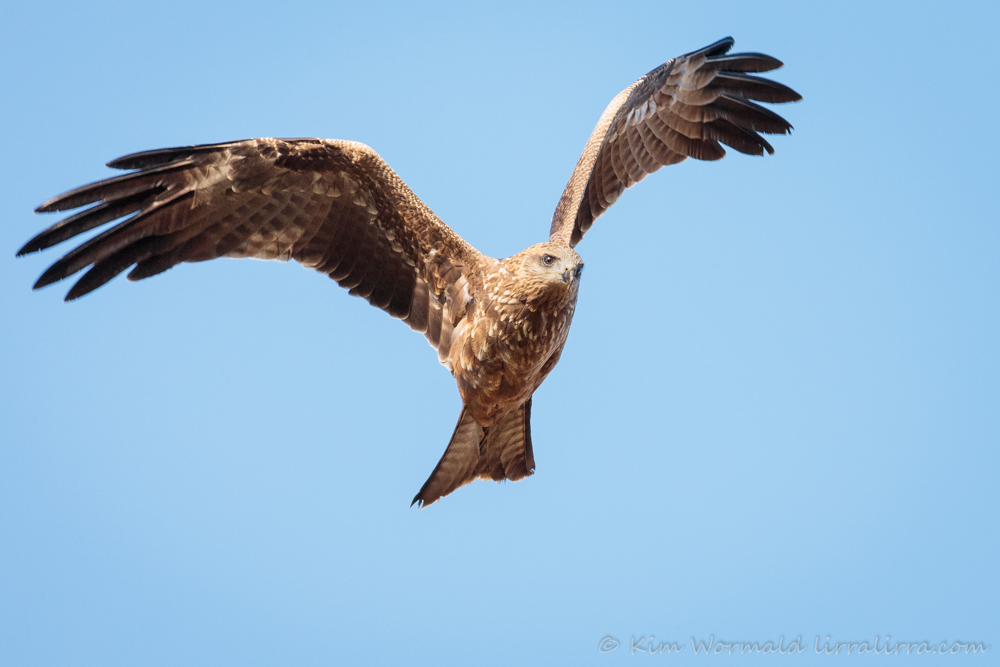

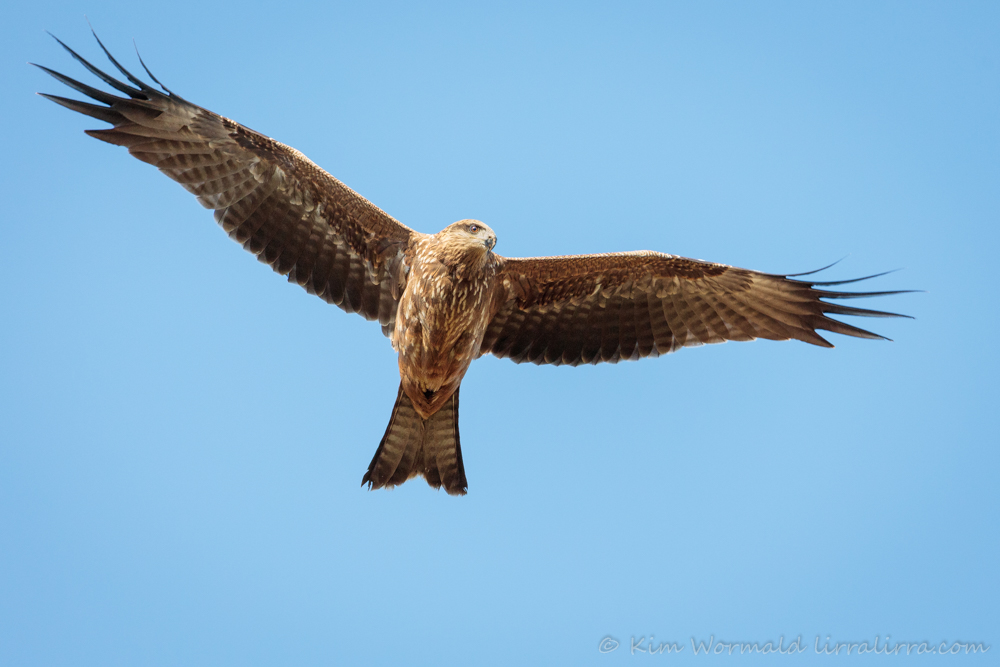
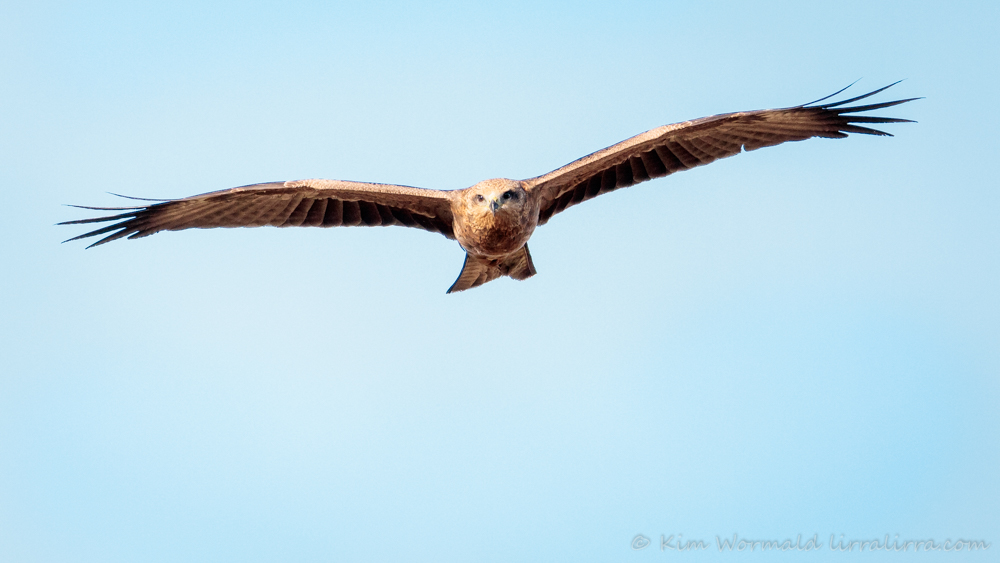
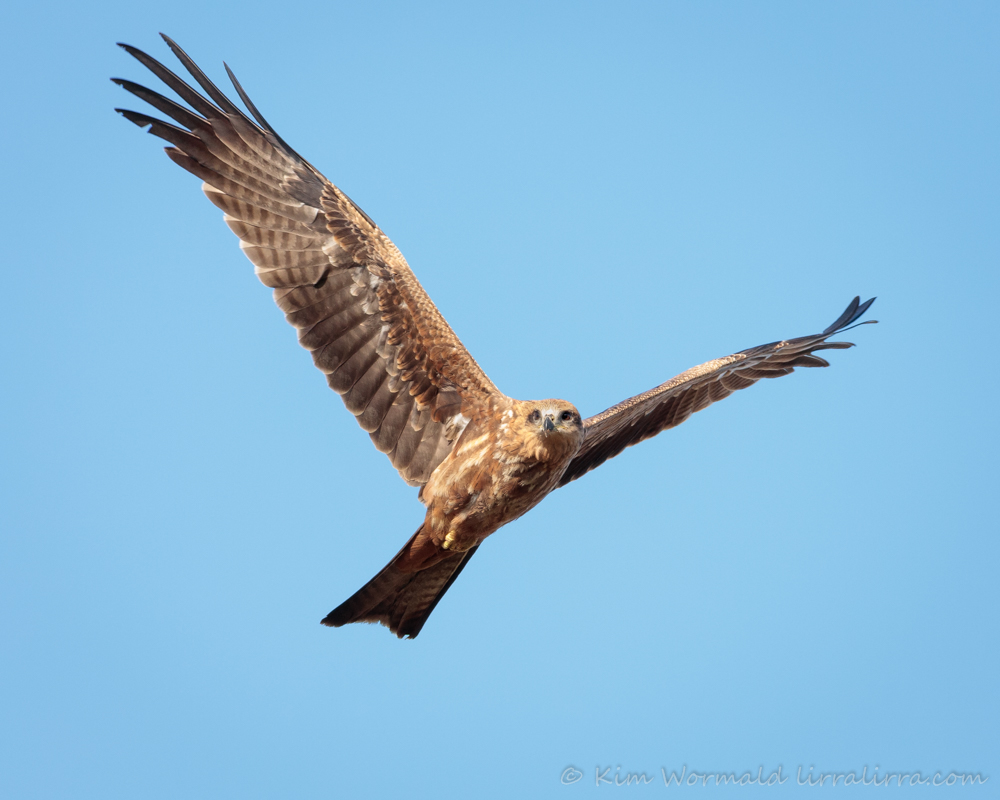

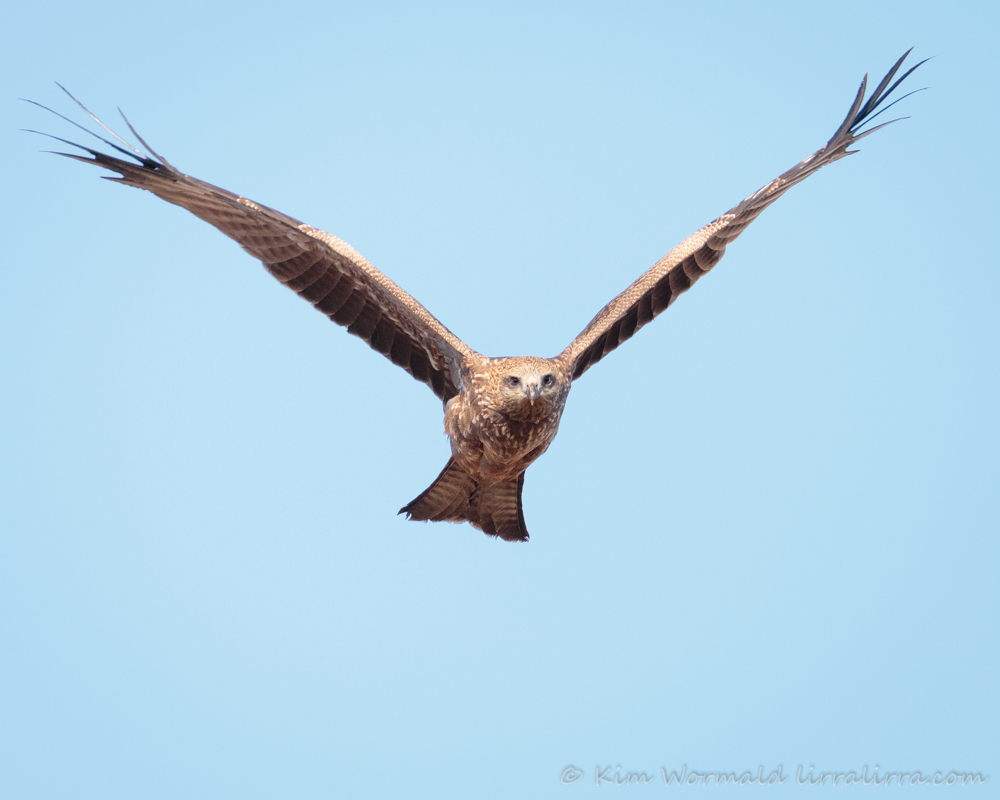
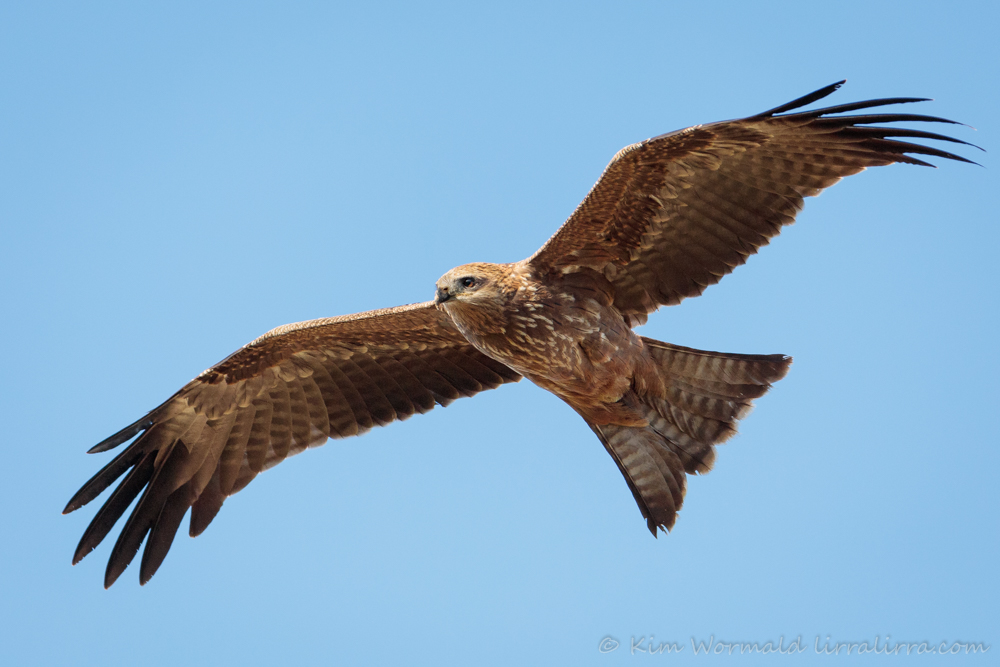

Still can’t think of them as ‘Black’ Kites, the moreso since seeing the chestnut tones in your beautiful photos, Kim. Off up north in a few weeks–one of the images so emblematic of tropical Australia is that of the langourous, day-long, circling Black (Fork-tailed!) Kites. With seemingly nary a wing movement. A lifestyle to emulate!
That’s true John, it is a strange name change. And also true about how they can move so far without seeming to exert themselves at all. It’s a wonder humans didn’t evolve with wings 🙂
Superb work, Kim. Wish I had been there – it looks like you had a lot of fun.
Thanks Neil. I always wish I’d been there when I see anyone’s images, if it was closer to home I think I’d be there every reasonable day, and some unreasonable ones too!
Absolutely magnificent shots Kim! I never saw them close enough to get any photos but there was a huge number circling in one area which is probably where you were. They came up as blurry bird shapes in the sky from the place where the mudnests are attached to the brick building.
I intend to go back now I have upgraded to a longer lens and hopefully will get something decent then.
Sorry to miss you on the day!
Hi Kim, that is where they were! Though not many were circling, instead there were occasional birds crossing the track. How exciting to have upgraded your lens, I hope it brings you heaps of fun and lots of awesome images.
Gorgeous photos Kim.
I love all the colours on the wings and body of the larger birds 🙂
Thank you Joy, spoken like a true artist 🙂
What an absolutely glorious sight. I suspect your heart soars with them, each and every time you are privileged enough to see them.
Thank you for sharing the beauty and the joy.
It really does EC, such freedom of movement would be incredible.
The Black Kites as with the Whistling kites have been in abundance around the WTP of late. I love watching them glide using their tail as a rudder to steer them, I could watch them for hours, but for all they are not flapping their wings, they soon put distance in between you and them.
I have also twice seen a Little Eagle along Paradise road nearest to the gate.
Thanks also for the contacts.
I often skedaddle past the ones near the old pump house as I’m keen to get to the ponds but this time I enjoyed dawdling. I love watching them use their tails too, just brilliant. I saw a Little Eagle a couple of months back between the Borrow Pits and the bird hide, as the crow flies. Have you seen it near Gate 5 or Gate 8?